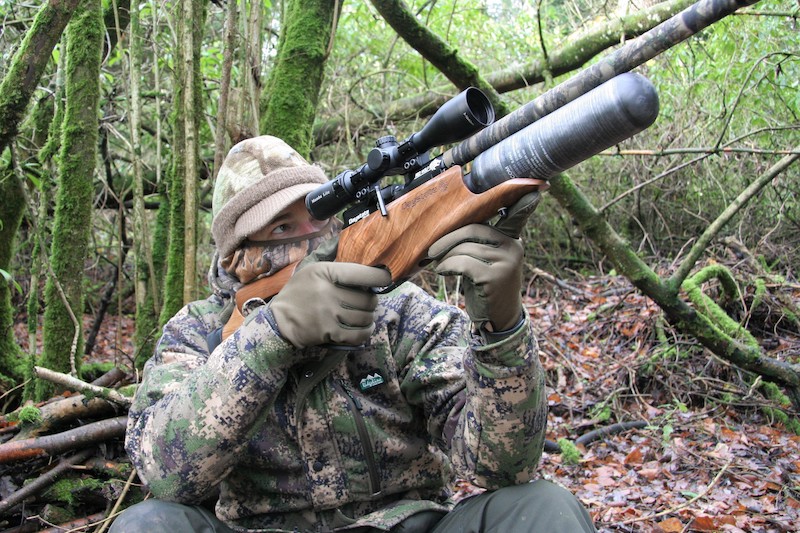Hunters who stay in because it’s cold outside are missing out on a vital time to keep grey squirrels in check, as Mat Manning explains…
Airgun hunters in the UK can make a massive contribution to conservation by controlling grey squirrels, and they should be doing it right through the year.
Much fuss is made of the damage this destructive introduced species has caused to our fragile native population of red squirrels but its impact on other indigenous wildlife is too often overlooked. Grey squirrels predate on the eggs and chicks of songbirds, and their habit of dominating natural food supplies is almost certain to be harmful to dormice. Add that to the wildlife habitat depletion and massive cost to the forestry industry (hundreds of millions of pounds every year) caused by grey squirrels’ relentless bark-stripping, and it’s a classic example of the unforeseen upset that so often occurs when an alien species is introduced to an ecosystem.
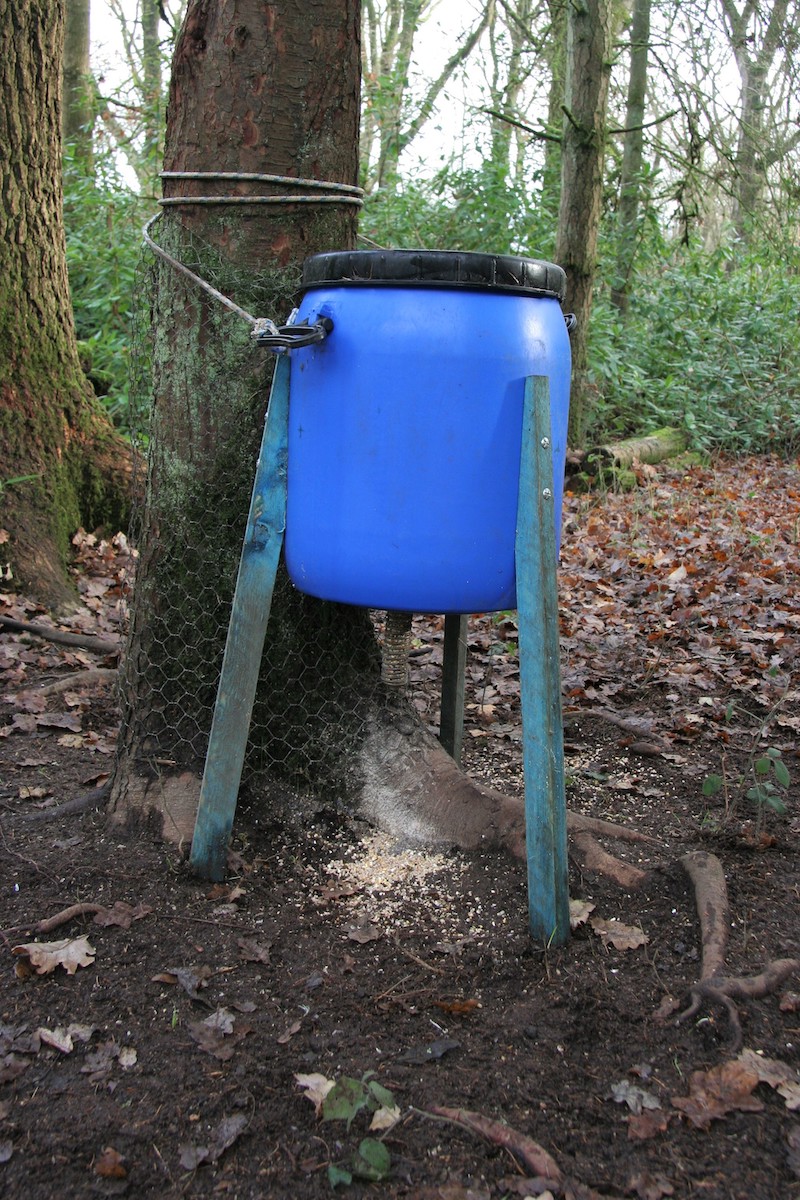
Winter is one of the best times for keeping grey squirrels in check. Ignore what some people say about these rodents hibernating through periods of cold weather – it’s nothing but a myth. Grey squirrels don’t like getting wet but they do venture out in sub-zero temperatures. In fact, cold weather should improve your chances because it puts an edge on squirrels’ hunger and makes them even more inclined to spend the daylight hours foraging for food.
Setting up a feeding station is a great way to optimise your winter hunting time by drawing squirrels to a predetermined spot. And you don’t even have to set up your own hopper if you share your ground with a game shoot because pheasant feeders act like a magnet to squirrels.
It’s not difficult to understand the appeal. Gamekeepers tend to put out most feed during the winter months – right when natural food is starting to run low. Squirrels are notoriously greedy and soon home in on easy pickings, so grain put out to stop pheasants from straying is simply irresistible to them.

I managed to bag a few squirrels by targeting a pheasant feeder earlier this week. I was actually out checking up on my own peanut-filled feeding stations when I spooked not one but two squirrels from beneath one of the gamekeeper’s hoppers.
My feeders had only been set up for a few days and the squirrels had yet to take much of an interest in them. However, I wasn’t going to pass up on the opportunity to nail one or two around their more established feed sources.
I had my Daystate Red Wolf slug over my shoulder. Although it’s an adult-sized air rifle, it is deceptively light, which makes it perfect for carrying around on my woodland rounds. And it’s always useful to have it close to hand in order to make the most of chances like this one.
It was a cold day and I felt confident that the squirrels I had spooked from the feeder, and hopefully one or two more, would soon be back for another munch. I didn’t have any hide-building gear with me, although I didn’t really think I needed it. Squirrels are usually quite bold when they’re distracted by an easy food source, and I also felt that the disturbance caused by building a makeshift hide would do more harm than good.
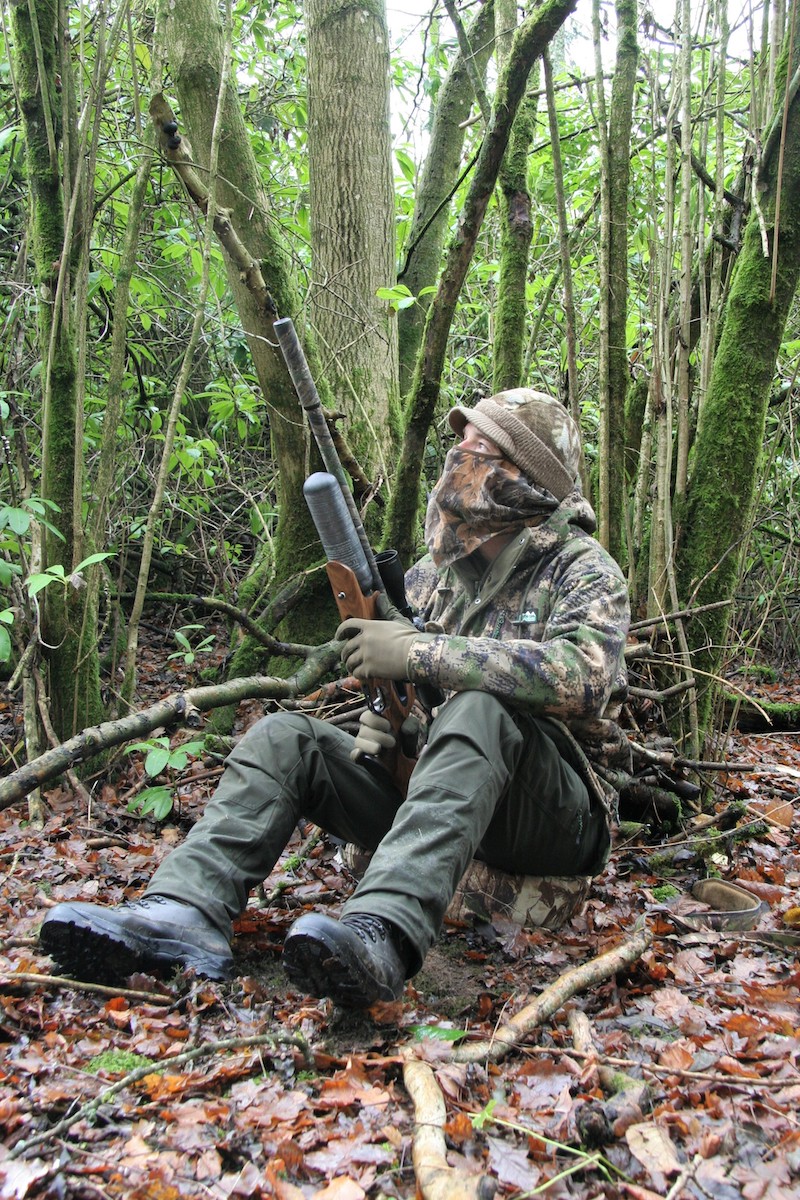
Relying on natural cover to keep me hidden, I settled down into the undergrowth about 25 metres from the feeder. I was sure that the undergrowth and dappled shade would be sufficient to keep me concealed from incoming bushy-tails, although I did put on a headnet to cover up the pale skin of my face.
The ruse worked, and it wasn’t long before a squirrel decided to put in an appearance. I was watching a robin scratching up grain from beneath the feeder when it suddenly fluttered off into the rhododendrons and began to utter an alarm call. Seconds later, my eye caught a flash of silvery grey as a squirrel slipped down a tree trunk close to the feeder and scuttled over to dine on the grain.
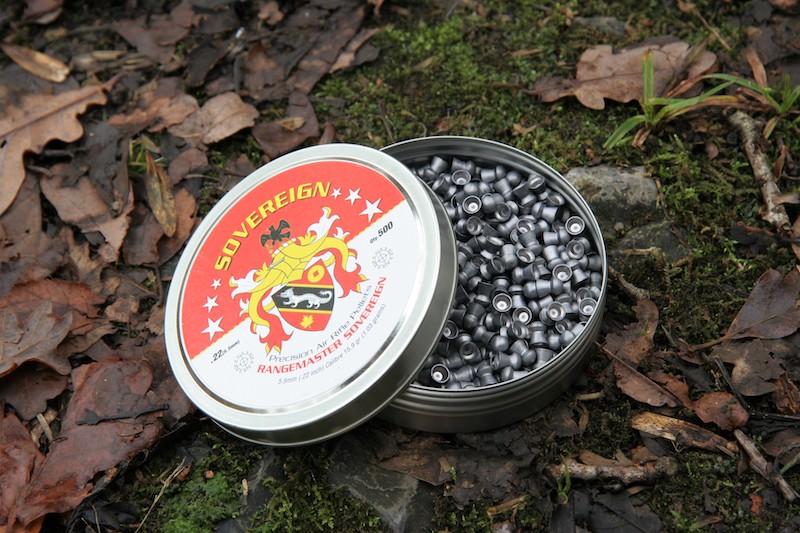
I watched the fidgety squirrel through my MTC Mamba Lite scope as it darted back and forth, picking small morsels up from the ground. It eventually sat up and hunched over to nibble at a larger grain. The momentary pause presented me with a side-on view of the static squirrel’s head. I settled the crosshairs onto the unsuspecting bushy-tail’s skull and rolled it over with a shot that echoed around the woods as the pellet hit home.
I’ve tried numerous pellets through my .22 Red Wolf, and have currently settled on Daystate Rangemaster Sovereigns. At its full power 35ft/lb, they don’t group quite as tightly as heavier pellets at extreme range but their accuracy is still impressive and they have a very flat trajectory. This power and pellet combination has proved itself countless times during woodland hunts, but being able to wind down to 16ft/lb also means that I’m able to use the same combo for other applications.
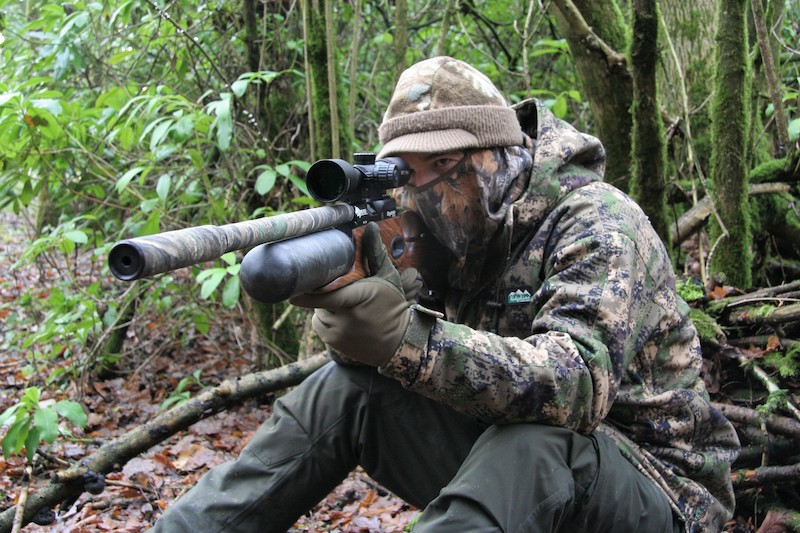
Back to the squirrel hunt, and I decided to leave the first addition to the day’s bag where it fell to avoid spooking others by breaking cover. It proved to be a good move when another squirrel started chattering from the treetops about 30 metres away and was promptly added to the bag.
My ambush was limited to just over an hour as I was only out on my pre-work rounds, and I had a long day in the office ahead of me. Nonetheless, I managed to add one more grain-raiding squirrel to make it a trio before heading home for breakfast. That’s three less squirrels causing trouble in that particular woodland, and proof indeed that it is certainly worth targeting this most destructive of pests during periods of cold weather.

